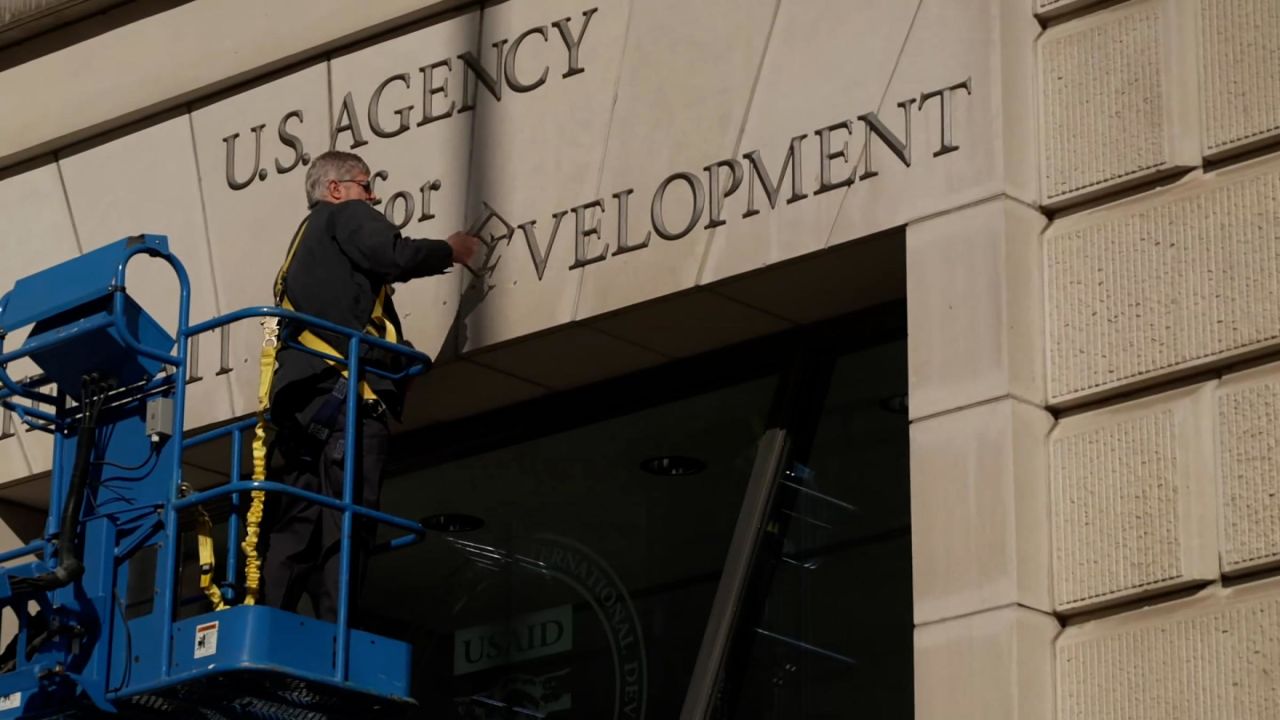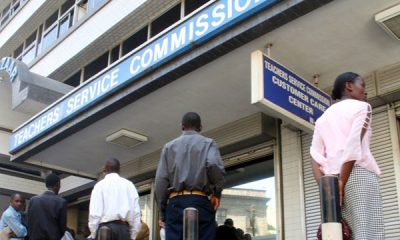News
Kenya Loses Access to Critical Health Surveillance System as Trump’s USAID Cuts Cripple Disease Monitoring
Health Cabinet Secretary Aden Duale announced at the World Health Assembly in Geneva on May 25 that Kenya is preparing to relocate critical health data currently hosted in the United States.

Health officials warn of compromised disease surveillance and outbreak response capabilities as US-hosted digital infrastructure becomes inaccessible
Kenya’s health ministry has lost access to its primary disease surveillance platform, the Kenya Health Information System (KHIS2), following severe funding cuts to the United States Agency for International Development (USAID) under President Donald Trump’s administration.
The system, which serves as the backbone for tracking diseases, monitoring health trends, and coordinating outbreak responses across the country, has become inaccessible after USAID terminated funding and ordered shutdowns of US-hosted health infrastructure in March.
Critical health data stranded
The Kenya Health Information System, built on the open-source DHIS2 platform, processes aggregate health data from thousands of health facilities nationwide.
The United Nations Programme on HIV/AIDS (UNAIDS) also reported that Kenya could not access data from the Kenya Health Information System, a crucial tool for disease surveillance and health planning.
Health Cabinet Secretary Aden Duale announced at the World Health Assembly in Geneva on May 25 that Kenya is preparing to relocate critical health data currently hosted in the United States.
The affected systems extend beyond KHIS2 to include the Kenya Master Health Facility List (KMFL), Afya KE, KenyaEMR, Chanjo KE, Damu KE, and Kemsa I-LMIS—all platforms central to Kenya’s healthcare delivery.
“The recent challenges have underscored the vulnerabilities in our health data infrastructure,” Duale stated.
“It’s imperative that we invest in secure, locally managed data systems to ensure continuity and resilience in our healthcare delivery.”
Unprecedented scale of aid cuts
The Trump administration has terminated over 90% of all USAID programs, and over 5,600 USAID workers have been fired or placed on leave.
Across Africa, the policies of the Trump administration are already having profound consequences for some of the world’s poorest and most vulnerable people, with health groups and non-governmental organizations expressing surprise and outrage after the Trump administration’s decision to cut 90% of USAID’s foreign aid contracts.
USAID had committed $2.5 billion to Kenya in its 2020–2025 strategic plan, with an estimated 80% of this budget earmarked for healthcare initiatives covering HIV/AIDS, malaria, maternal and child health, and vaccination programs.
The cuts have created a $403.8 million (KES 52 billion) gap in Kenya’s health budget, according to the Ministry of Health.
Impact on disease surveillance
The loss of access to KHIS2 has particularly severe implications for Kenya’s disease surveillance capabilities.
The system processes data from over 9,000 health facilities and serves as an early warning system for disease outbreaks.
Without real-time access to this data, health officials cannot effectively monitor disease patterns, track vaccination coverage, or coordinate rapid responses to emerging health threats.
Kenya’s HIV and TB response is in crisis as U.S. Aid cuts threaten lifesaving treatments, with aid cuts likely to lead to reduced HIV testing, reduced access to prevention tools like PrEP and condoms and an increase in undiagnosed and untreated cases.
The timing is particularly concerning as Kenya faces ongoing challenges with malaria, tuberculosis, and HIV/AIDS.
The country has relied heavily on KHIS2 for monitoring treatment outcomes, tracking patient adherence, and identifying areas requiring targeted interventions.
Vulnerabilities exposed
Years of underfunding and systemic corruption have left Kenya’s healthcare system heavily dependent on donor support, particularly from USAID.
The current crisis has exposed critical vulnerabilities in hosting essential health infrastructure outside the country’s borders.
“With donor funds curtailed, these platforms now suffer from maintenance gaps and technology shortages, severely hindering Kenya’s ability to monitor public health trends and respond promptly to emerging crises,” the Ministry of Health reported in April.
The affected systems manage everything from patient records and treatment protocols to vaccine distribution and supply chain logistics.
Rural health clinics, which serve millions of Kenyans in remote areas, are particularly vulnerable as they rely heavily on these digital platforms for basic operations.
Race against time
Kenya is now racing to establish local data hosting capabilities, but faces significant budget constraints and technical challenges.
The transition involves not just moving data, but ensuring continuity of services while building new infrastructure and training personnel.
The Ministry of Health has not provided a timeline for when local systems will be operational, raising concerns about prolonged disruptions to health services.
The complexity of migrating years of historical health data while maintaining system functionality presents both technical and logistical challenges.
Given the US’ major contribution to aid, Trump’s cuts could push 5.7 million more Africans into extreme poverty next year.
Kenya’s situation reflects a broader crisis across Africa, where countries heavily dependent on US health aid are scrambling to maintain essential services.
The disruption comes at a critical time when African nations are still recovering from the COVID-19 pandemic and facing emerging health threats that require robust surveillance systems.
Other countries in the region that rely on similar US-hosted health information systems may face comparable disruptions.
The crisis has accelerated discussions about health data sovereignty and the risks of depending on foreign-hosted infrastructure for critical national systems.
Health experts argue that while the immediate crisis requires urgent solutions, it also presents an opportunity for Kenya to build more resilient, locally controlled health information systems.
However, the immediate priority remains ensuring that disease surveillance and health service delivery can continue without major disruptions.
Public health officials warn that any prolonged gaps in data access could compromise Kenya’s ability to detect and respond to disease outbreaks, potentially putting millions of lives at risk.
The situation gives an insight to the complex interplay between international aid, technological infrastructure, and national health security in an increasingly interconnected world where digital systems are essential for effective healthcare delivery.
Kenya Insights allows guest blogging, if you want to be published on Kenya’s most authoritative and accurate blog, have an expose, news TIPS, story angles, human interest stories, drop us an email on [email protected] or via Telegram
-

 Investigations2 weeks ago
Investigations2 weeks agoMoney Bior, Lawyer Stephen Ndeda Among 18 Accused Of Running An International Fraud Ring Involved With Scamming American Investor Sh500 Million
-

 Investigations1 week ago
Investigations1 week agoNestlé Accused of Risking Babies’ Health in Africa with ‘Toxic’ Cerelac Product Sold Highest in Kenya
-

 Investigations7 days ago
Investigations7 days agoHow Land Grabbing Cartels Have Captured Ardhi House
-

 News2 weeks ago
News2 weeks agoTSC Announces Major Policy Shift To End Transfer Of Promoted Teachers
-

 News1 week ago
News1 week ago48-Year-Old Woman Who Pushed 25-Year-Old Boyfriend To Death From 14th Floor Kilimani Apartment Arrested
-

 Investigations2 weeks ago
Investigations2 weeks agoKDC Rocked With Fresh Sh500 Million Tender Scam
-

 Grapevine2 weeks ago
Grapevine2 weeks agoMP Anthony Kibagendi Assault and Injures Kisii Man He Accuses Of Sleeping With One Of His Girlfriends
-

 News2 weeks ago
News2 weeks agoKenyan Man Fighting For Russia Killed On The Frontline Of Ukraine

















